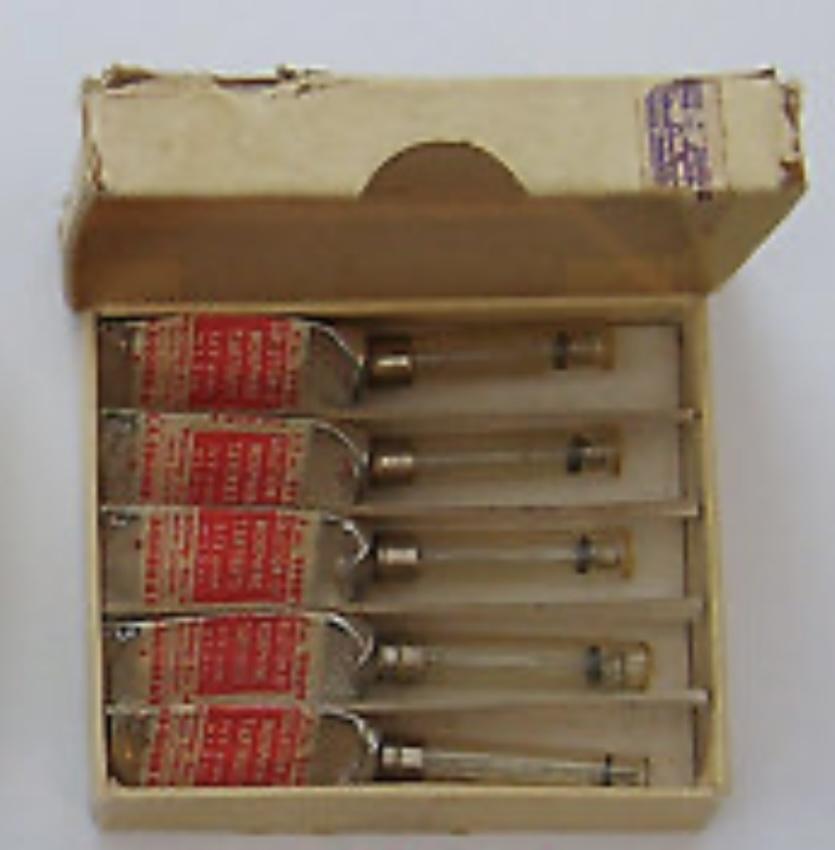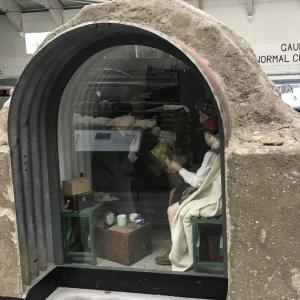
Morphine medical kit
During World War II, wounded American soldiers on the battlefield faced two formidable adversaries: the immediacy of their injuries and the agony that followed. Against this threat, the U.S. military developed a simple yet vital solution—a compact, single-use device known as the morphine syrette, packaged in what became known as morphine kits. Each soldier carried within reach a lifeline that could be self-administered or used by a comrade, delivering quick pain relief during those critical moments when survival often hung in the balance.
The morphine syrette was a small, collapsible metal tube containing morphine tartrate in a sterile solution. Each syrette held a standard dose of approximately 32 milligrams of morphine. These were usually issued in small protective tubes, and in larger medical kits, they were often grouped in boxes containing five individual syrettes. Designed for ease of use, the syrette had an integrated needle and required no assembly, allowing for immediate injection into muscle or subcutaneous tissue.
Inclusion in personal and unit-level first-aid kits was widespread. Paratroopers and infantrymen often carried one syrette in their personal first-aid pouches. Medics, field surgeons, and aid station personnel carried larger quantities in specially organized medical kits. In combat, speed and mobility were critical, and having morphine immediately accessible allowed frontline troops to manage pain, reduce the onset of traumatic shock, and stabilize themselves or fellow soldiers until evacuation was possible.
Morphine, derived from opium, works by binding to opioid receptors in the brain and spinal cord, blocking pain signals and producing a sense of calm or euphoria. On the battlefield, this effect was not only a comfort but a potential lifesaver. By dulling severe pain and calming panic, morphine helped wounded soldiers remain coherent, maintain breathing patterns, and endure the long and sometimes rough journey to field hospitals.
The morphine syrette was developed and mass-produced by American pharmaceutical companies, most notably E. R. Squibb & Sons. By the end of the war, tens of millions of syrettes had been issued, making them one of the most widely distributed medical items of the conflict. Their simple, rugged design made them ideal for use in harsh and chaotic conditions.
To prevent overdose, used syrettes were pinned to the clothing of wounded soldiers. This visual marker warned medical personnel that a dose had already been given. Guidelines instructed against administering morphine to individuals who were unconscious, had depressed breathing, head injuries, or undiagnosed abdominal pain. In cold weather or in cases of severe shock, slowed circulation could delay the drug’s effects, sometimes leading to dangerous second doses. Still, the benefits far outweighed the risks when used properly.
Morphine kits symbolized the evolution of battlefield medicine. Pain management became a priority not only to relieve suffering but to preserve life and function. The ability to administer morphine in the field, within seconds of injury, represented a significant advancement in trauma care and marked a turning point in how military medicine approached emergency intervention.










